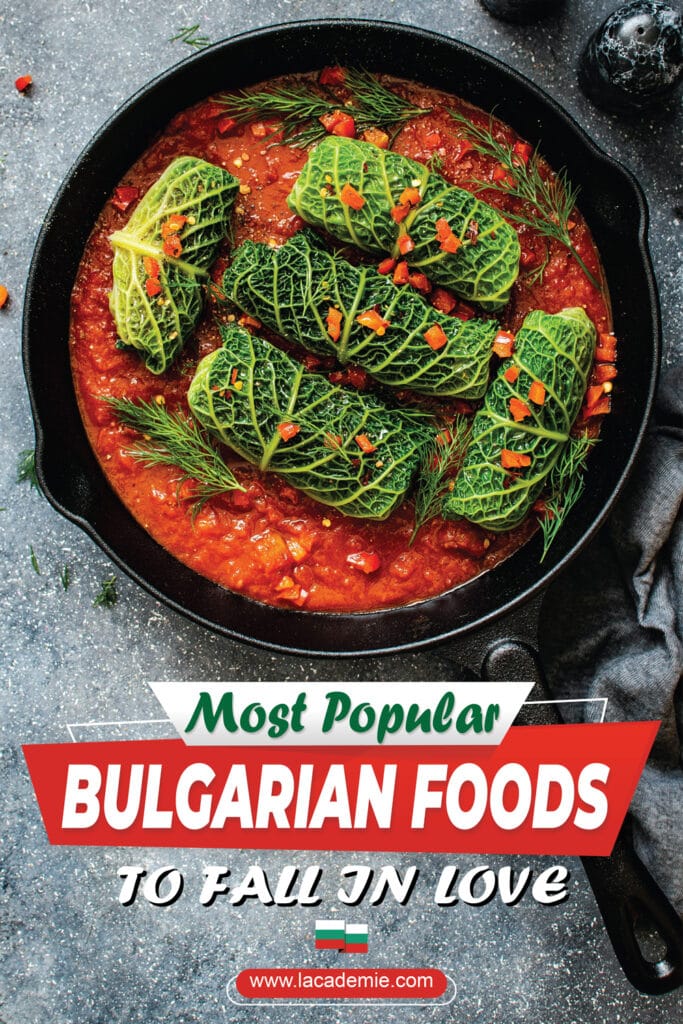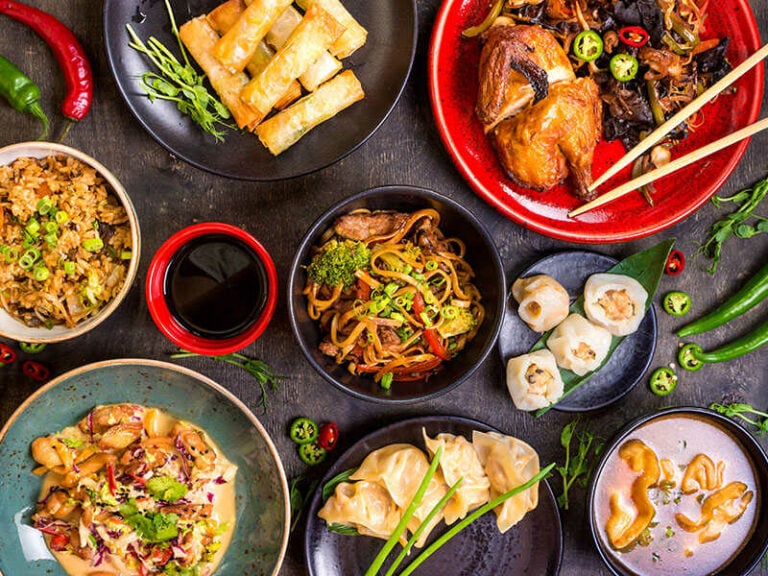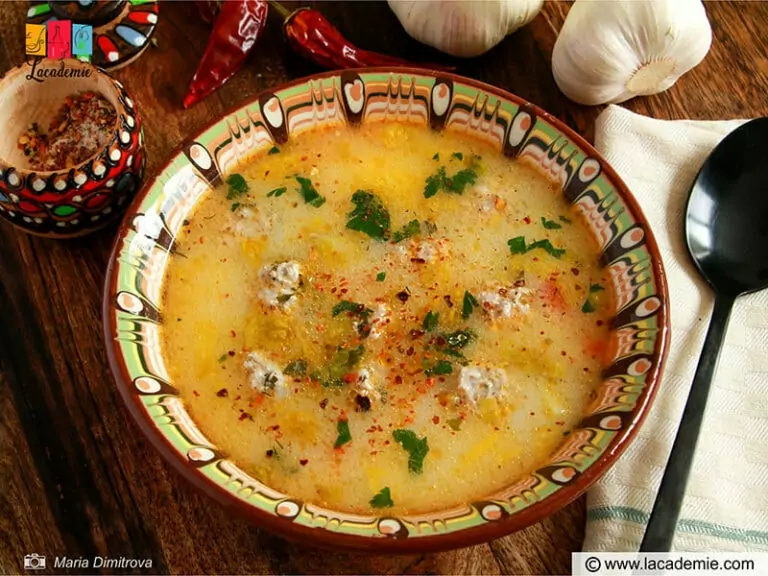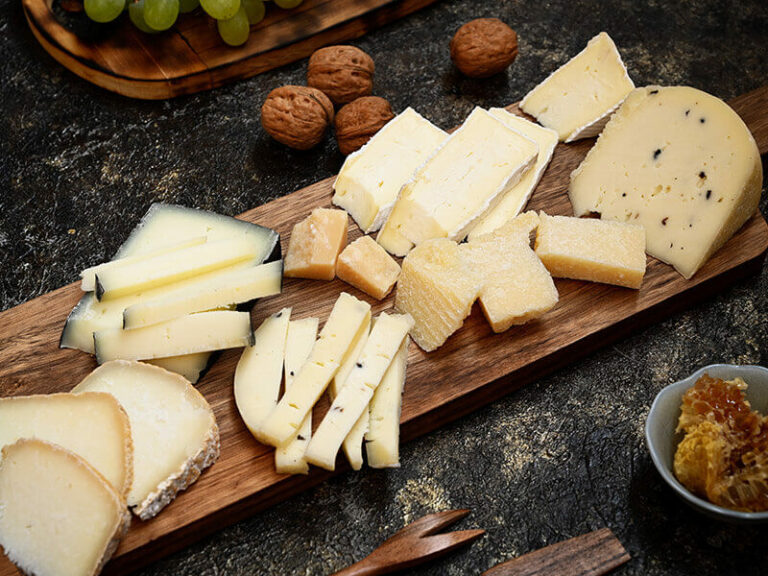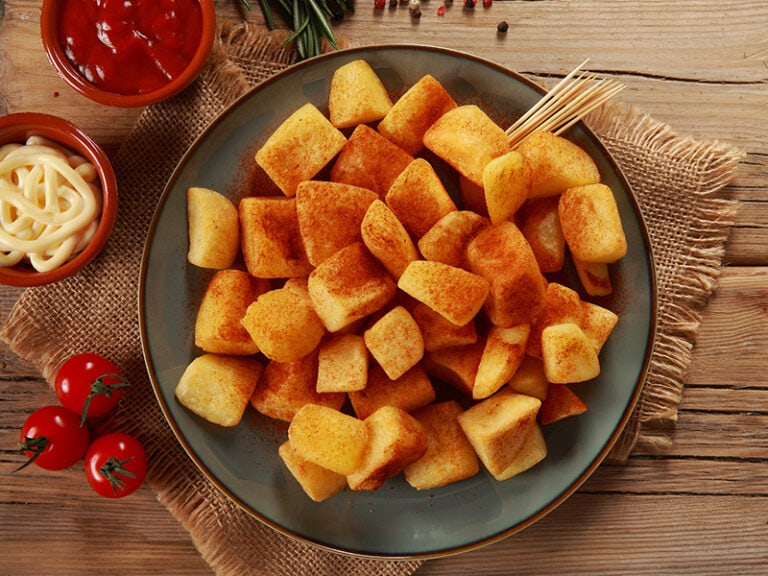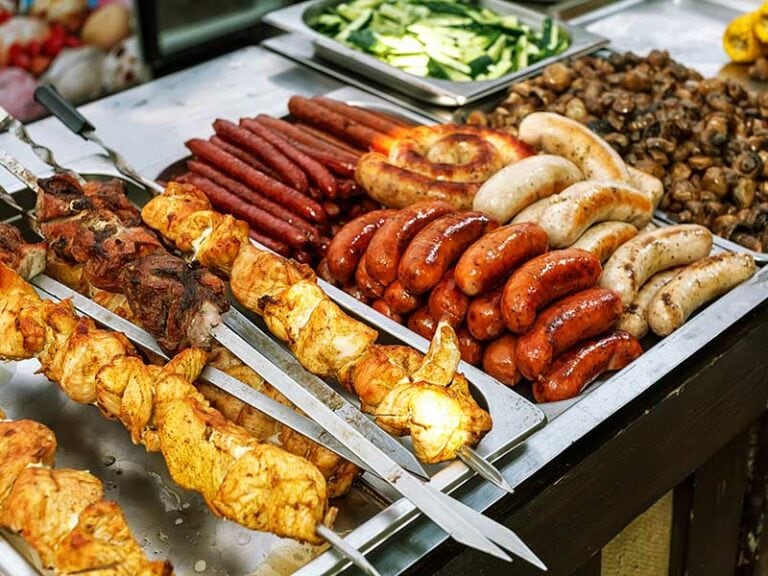Have you named Bulgarian foods in your incoming journals? Well, you definitely should do it now. Though Bulgaria is a representative of Southeast European gastronomy, the food there has a highly reasonable price to become a perfect choice for low-budget traveling.
But that’s not all! As with anything, the cheapest doesn’t mean the worst as long as you make the right choice, and Bulgarian cuisine is the case. Keep scrolling for more information about the culinary delights of this Balkan country!
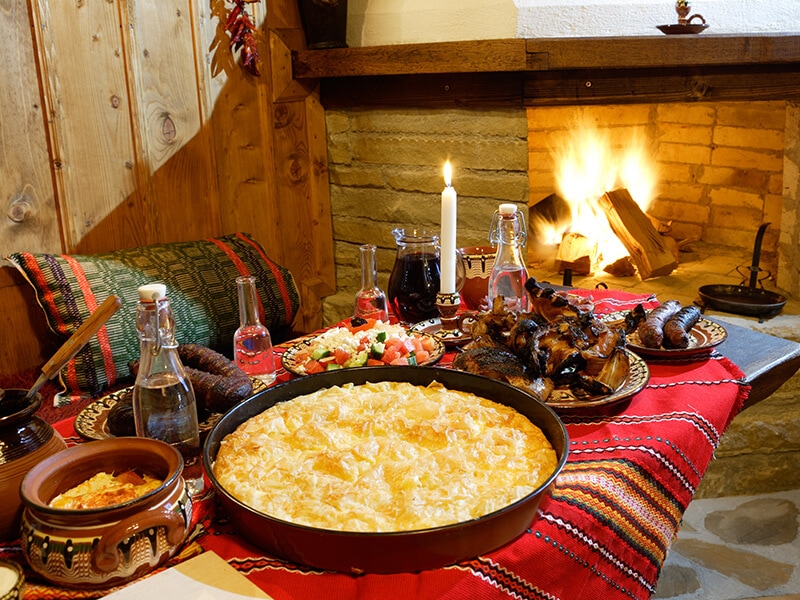
A Brief Look At Bulgarian Cuisine
As with other Balkan nations, Bulgarian gastronomy is heavily contributed by Ottoman cuisine. Therefore, you’ll find that it shares a number of dishes with Turkish and Greek foods but has different recipes as well as being more affordable.
The consumption of meat and vegetables is somewhat equal, though you may notice that lamb and veal are abundant in traditional dishes. Religious and spirituals also contributed a wide range to Bulgarian foods, and the folks especially honor Christmas.
Hence, you can tell that Bulgarian cuisine is extremely varied. Many contributions of other gastronomies, as well as its own culture, have created magnificent Bulgarian foods nowadays. Let’s skip the talking and get right into the dishes you’re longing for.
Bulgarian Baked Goods
Apparently, there are countless fillings for the baked goods in Bulgarian, and you can enjoy them throughout the day. These foods are not only meant to fill your stomach with nutrients but also fill your mouth with deliciousness.
1. Banitsa (Баница) – Cheese Pie

Traditionally, ‘banitsa’ is a layered or rolled pie consisting of dough rolled into thin crusts, butter, and most importantly, sirene – a white cheese commonly used among the Balkan nations.
Though you can find banitsa in other countries such as Macedonia or Serbia, it’s most popular in Bulgaria.
You can find banitsa in almost every corner throughout the nation, in any bakery store. It can be served on its own like a croissant, stuffed with other types of cheese, or savory filling like bacon, spinach, leeks, cabbage; options are endless.
And though ‘Banitsa’ is an ideal option for Bulgarian breakfast dishes, you can also enjoy the dessert versions of it, which are combined with jam, honey, fresh fruits, yogurt, or cream.
You can even find more variety of banitsa than what this video can show!
2. Parlenka (Пърленка) – Flat Bread
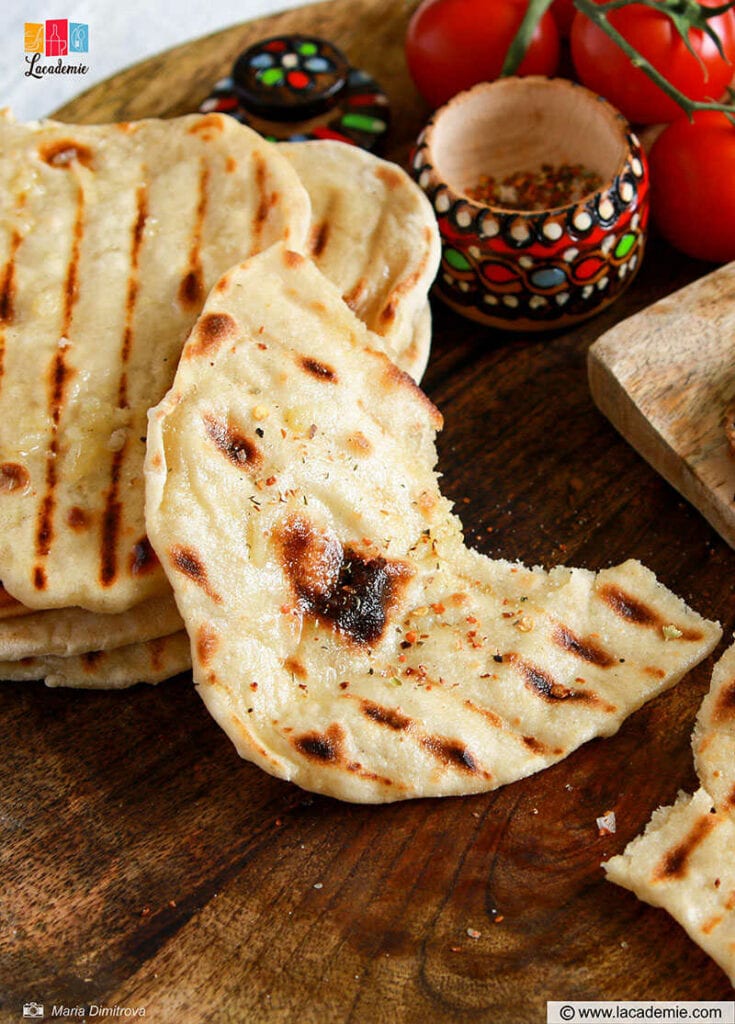
Many Bulgarian dinner dishes call for parlenka as a side dish or to dip in the soups. Like banitsa, the folks here have created numerous types of parlenka, but the traditional ones still remain as a staple.
The bread insists on a soft and doughy interior with an uneven crust, as well as uneven round-shaped. Parlenka sometimes can be filled with sirene or kashkaval cheese, or spread with butter and crushed garlic to be served individually.
3. Baklava (Баклава) – Layered Pastry

Originated from the Ottoman Empire period, baklava is now present in many Balkan and Middle Eastern cuisines. Though the Greek and the Turkish version are the most well-known ones, you should not skip Bulgarian baklava when you get there.
You can find baklava in almost any Bulgarian bakery store all year round, but this pastry is significantly associated with Christmas Eve. It usually added walnuts, sometimes pistachio, and glazed with honey.
4. Palneni Chushki (Пълнени чушки) – Stuffed Peppers
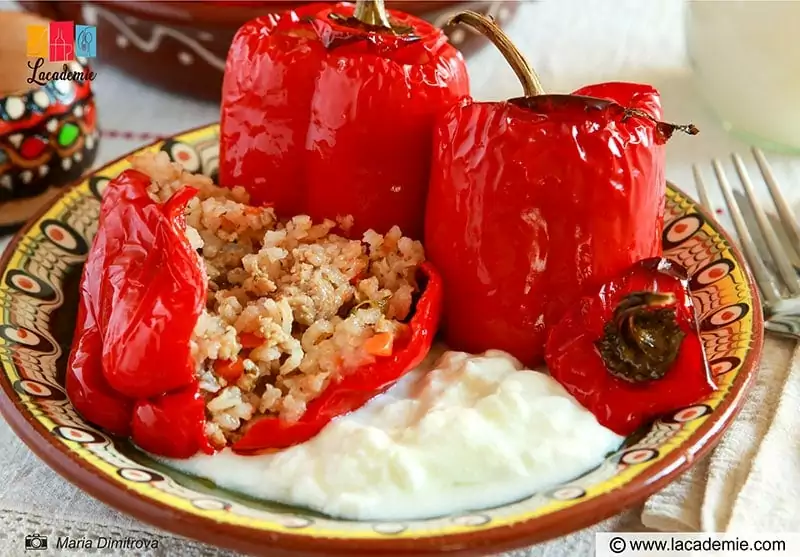
Stuffed bell pepper is a typical dish in many gastronomies, and the Bulgarian version – Palneni Chushki – is a must-eat one. Due to the ingredients’ season and the cook, the stuffing may be changed, and you can easily find the vegetarian version of it.
Though you may be more interested in the meat stuffing, the vegetarian version is vital to Bulgarian Christmas Eve. Their forty-day Advent fast ends on this night, and all the dishes on the table must be vegetarian.
5. Sarmi (Зелеви сарми) – Stuffed Cabbage Leaves
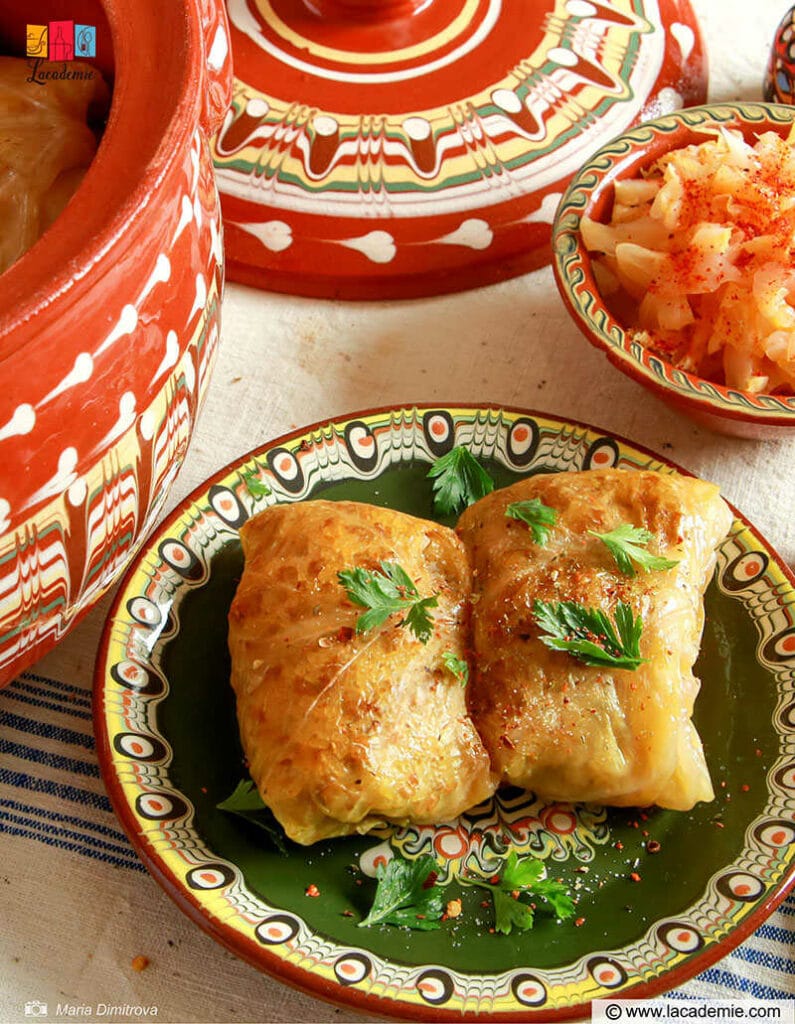
Though the ‘sarmi’ is now widely known as a signature dish in Turkish cuisine, it actually stemmed from the Ottoman Empire. And the Bulgarian version of ‘sarmi’ is not something you want to skip when you get there.
It’s often stuffed with minced pork or beef, rice or bulgur, and Bulgarian spices and herbs. However, there’s a vegetarian version that is as important as ‘palneni chushki’ on the Christmas dinner table.
Whatever the stuffing is, the wrapping usually is cabbage or vine leaf.
6. Moussaka (Мусака) – Potato Dish With Ground Meat
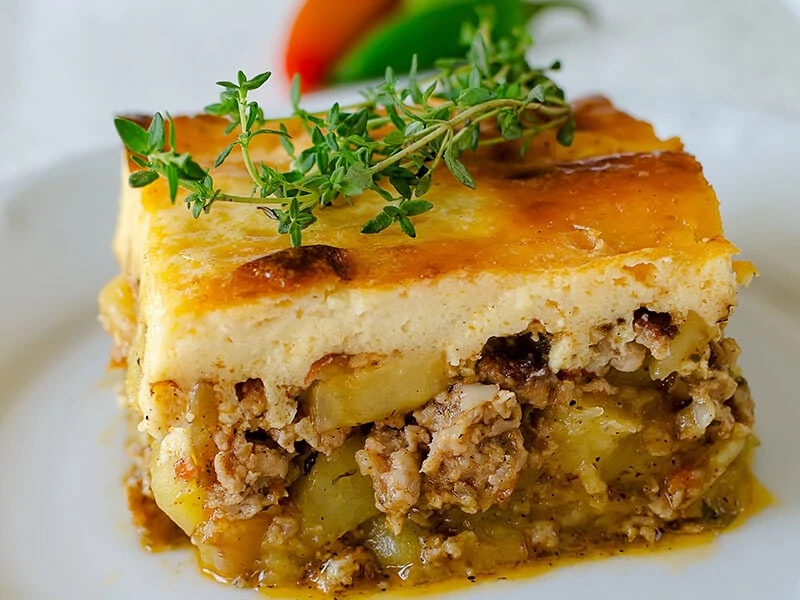
You may know moussaka as a delectable side dish from Greece since the Greeks own the most famous version, but it actually first appeared in Middle Eastern cuisine. And in Bulgaria, the locals use potatoes in place of eggplant in the regular recipes.
What makes moussaka become a staple in Bulgarian gastronomy today may be the yogurt topping which created a distinct taste. However, this dish is more like an occasional treat than what you can enjoy daily.
Since this dish contains hearty vegetables, the Bulgarians usually allow their moussaka to rest and evaporate after taking it out from the oven. Then they cut it into squares and serve warm so that it won’t be too mushy by the veggies’ leakage.
7. Garash (Торта Гараш) – Chocolate Cake With Walnuts
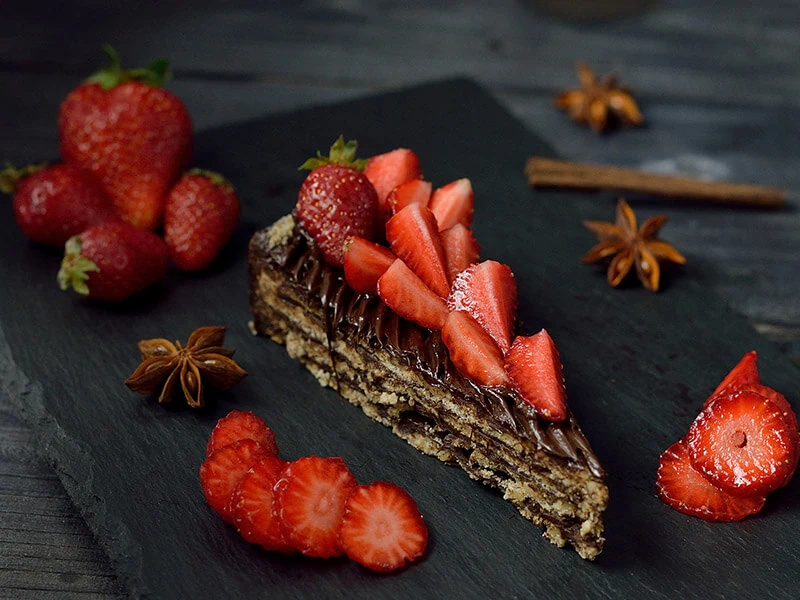
The recipe for this chocolate cake was created in 1885 by an Austro-Hungarian baker. He first served it in Ruse, but the recipe only became famous when he brought it to Sofia. Nowadays, you can find it as a staple in every Bulgarian pastry shop.
The original ingredients include five layers of walnut interlaced with dark chocolate. The outer of the cake is covered in chocolate icing. Traditionally, it is decorated with chocolate ornaments and ground walnuts or pistachios, but you can find the fruit garnishings as well.
8. Tikvenik (Тиквеник) – Pumpkin Strudel
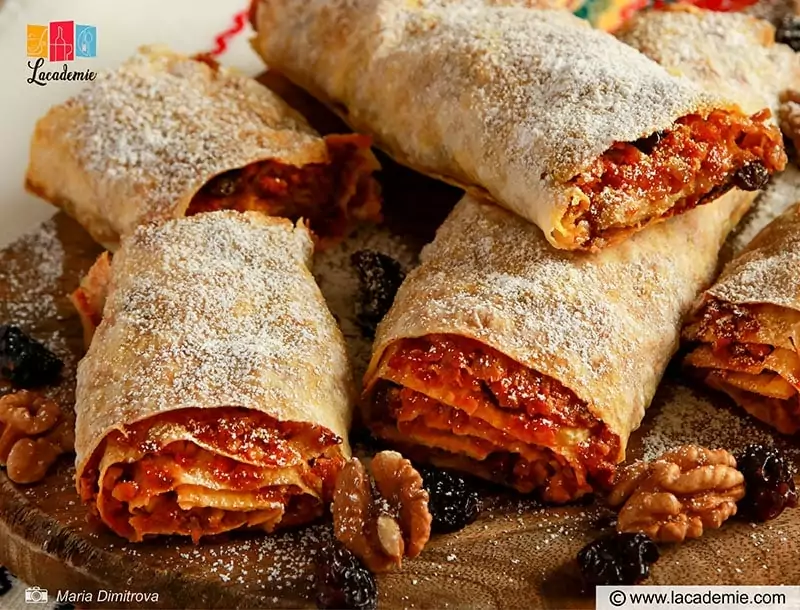
This Bulgarian dessert is indeed a version of traditional banitsa but then claims its own name due to the magnificent deliciousness. Sprouted from the North of Bulgaria, this used to be a pastry to honor the cold months, but Bulgarians would like to have it all year round.
Though pumpkin strudel with some cinnamon may appear in many other cuisines, Bulgarian tikvenik is outstanding, thanks to the added walnuts. This compounded flavor turns out to be super tasty and stun every foreigner who first tries it.
Bulgarian Soups and Stews
Besides the magnificent baked goods, Bulgarians are also famous for their water-based foods. Here are some hearty soups and dishes that you need to dive into.
9. Tarator (Таратор) – Chilled Cucumber Soup
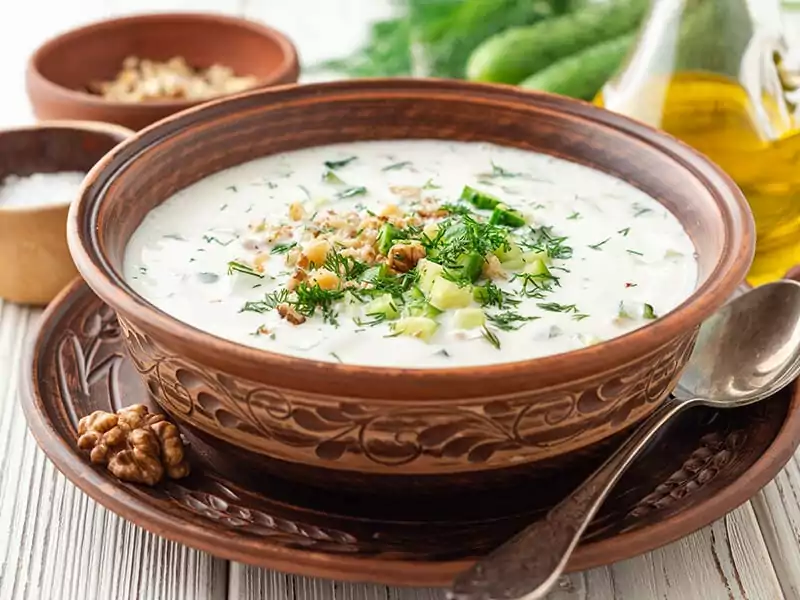
Tarator is a perfect chilled soup for the hot summer days. The main ingredients consist of traditional Bulgarian yogurt, chopped dill, and cucumber. Sometimes the Bulgarian also adds ice to the soup and serves it in mugs, making it a cool Bulgarian drink.
Nowadays, you can find it as an appetizer in almost any Bulgarian restaurant. In addition, its popularity has also spread to the food culture of Macedonia and other neighboring countries.
If you’ve tried and like this soup, you’ll want to look for Snezhanka – a salad version of the soup that consists of less water. Legend has it that Greek tzatziki is the sprout of both dishes.
10. Shkembe Chorba (Шкембе чорба) – Tripe Soup
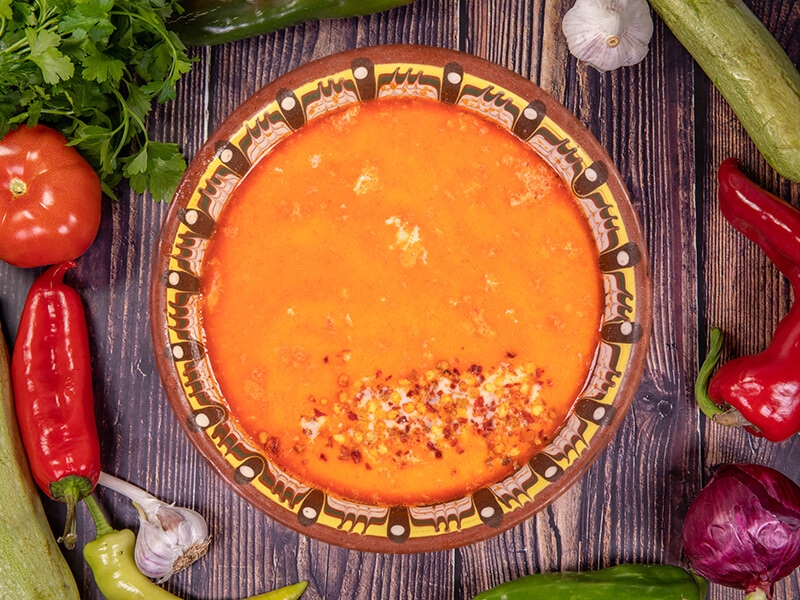
This soup is an ideal Bulgarian lunch dish to fill up your stomach with a tasty broth. The traditional dish calls for mashed garlic, vinegar, a small amount of milk, and pork, beef, or lamb tripes, sometimes substituted with intestines.
In Bulgaria, it’s used to be a well-known soup only among blue-collar workers due to its high affordability. Some restaurants and shops only served shkembe chorba before the 1980s. During this period, fast-food chains began to replace those old-school eateries.
However, instead of being obsolete, shkembe chorba has shifted. Other cheap and moderate restaurants began to add it to their menu, and the dish became a Bulgarian culinary staple today.
11. Supa Topcheta (Супа топчета) – Meatball Soup
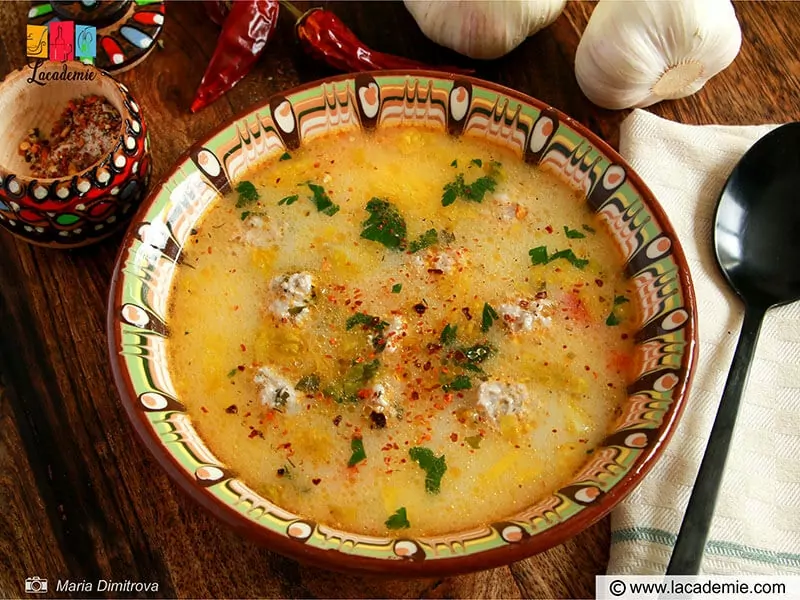
Meatball soups exist in many cuisines, but what makes Bulgarian ‘Supa Topcheta’ stand out from the rest maybe is the broth. Bulgarians usually use egg or their traditional yogurt to thicken the soup, sometimes both, and add a small amount of lemon juice to finish.
They also often have this comforting soup with bread to get full for the lunch meals. However, it’s very common during the Christmas season, especially for dinner, since it’s pretty efficient to warm up the stomach.
12. Oshav (Ошав) – Sweet Drink With Dried Fruit
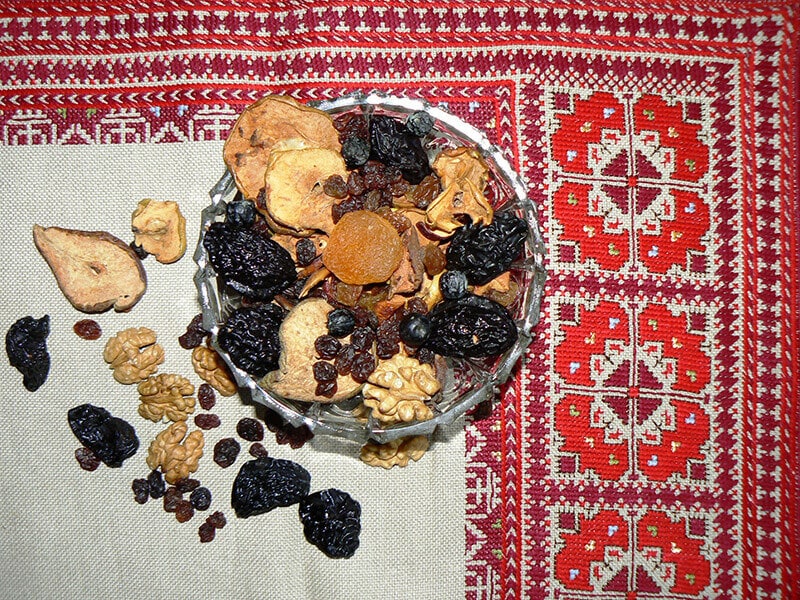
Photo Credit: oshav by Spiritia is licensed under CC BY-SA 3.0
Another Christmas Eve dinner must-have, and this time it’s a sweet drink. The traditional recipe for Oshav is a combination of dried fruits, mostly prunes, apples and pears, which are soaked in water.
Though the outcomes look pretty simple, Oshav also includes cinnamon and cloves when served, which make it a perfect warmful dessert for the cold holidays. You can either have it cold or hot, but the locals prefer to use it chilled.
Bulgarian Grilled and Fried Dishes
Don’t travel to Bulgaria without trying their fried and grilled foods. These traditional dishes stick to the comfort foods menu and can be used either as snacks or main meals.
13. Kebapche (Кебапче) – Grilled Meat Kebabs
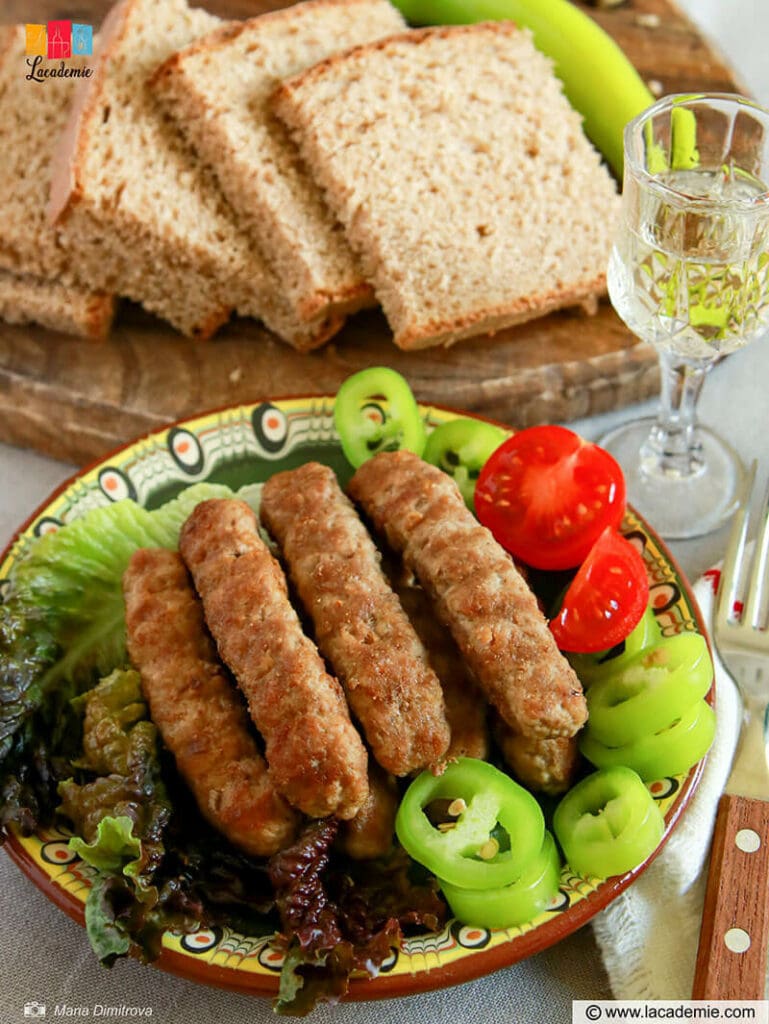
Sprouted from Middle Eastern cuisine and arrived in Bulgaria during the 14th and 15th centuries. But it’s only become a national food since the 20th century when countless street food stalls have shown up selling this delicacy.
Bulgarian ‘kebapche’ shares some similarities with the typical kebab. However, this minced meat is shaped to a cylindrical form like hotdogs before grilling.
The main ingredients include pork, black pepper, cumin, and salt; some recipes also call for minced beef. To serve kebapche as a breakfast, Bulgarians usually have it with French fries or sirene cheese, sometimes both. Nowadays, it’s also well-known as a drinking bait.
14. Meshana Skara (Мешана скара) – Mixed Grill

Bulgarians love meat! What is called ‘meshana skara’ indeed is a bunch of grilled meat along with some other grilled vegetables. And it’s not only served as a heavy-meat dish but also a famous drinking bait.
Typically, this dish is the combination of a pork skewer, a pork steak, some kebapche, and kyufte – another kind of grilled minced meat in Bulgarian culinary culture. Whether you’re a fan of BBQs or an actual pitmaster, don’t miss your chance to try this dish in Bulgaria.
15. Chushki Burek (Чушки бюрек) – Peppers Burek
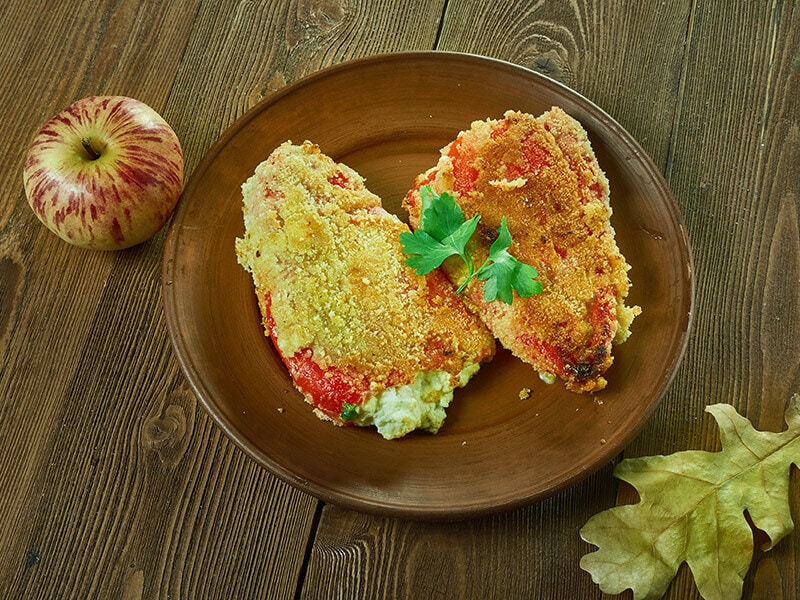
Well, it can be said that we Bulgarians love peppers, as they are found in many recipes. ‘Chushki burek is a famous dish that is made from roasted peppers, stuffed with eggs, cheese, spices and herbs, then the peppers are rolled in flour and fried.
This traditional appetizer is served warm, along with salad and a Bulgarian garlic yogurt sauce. Suppose you’re a fan of modern fast food, Bulgarian chushki burek is not something to miss when you travel to this country.
16. Mekitsa (Мекици) – Fried Dough
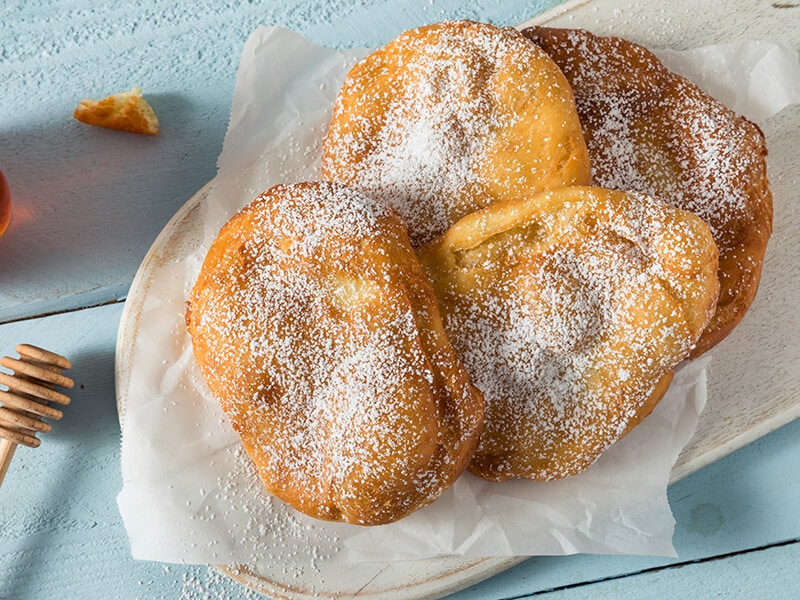
Invented during the 5th century, ‘mekitsa’ is a Bulgarian fried dough made of flour, eggs, water, salt, oil, leaven agent, and most crucial – Bulgarian yogurt. Though this bread is fried, its texture is meant to be soft as the Slavic root name ‘mek’ stands for ‘soft’ in English.
Mekitsa is usually used as a breakfast or dessert in Bulgarian culture. You can choose multiple toppings for this beautifully fried dough, icing sugar, jam, caramel, honey, or once again, the traditional yogurt or cheese.
Find out the reaction of foreigners to mekitsa.
17. Palatschinki (Палачинки) – Honey Butter Pancake
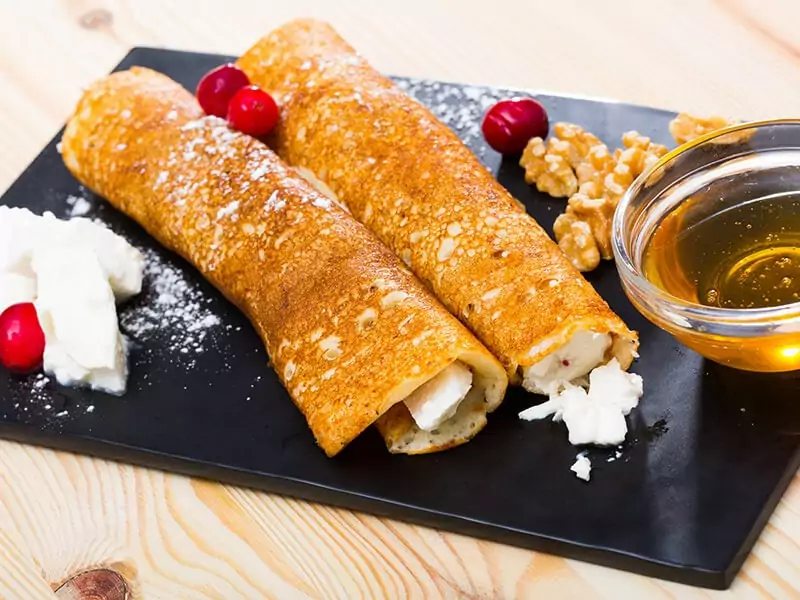
Palatschinki is among the foods that are sprouted from the Greco-Roman period that are still widely used today. Therefore, you can also find this pancake in many other countries outside the Balkan regions.
However, the Bulgarian version is also relatable to the Middle Eastern one. No matter what the origin is, the folk here not only use palatschinki as a sweet dessert by topping it with cream and honey but also stuff it with savory fillings such as grilled meat.
What To Expect From Bulgarian Side Dishes?
Except for the salad and the ‘printsessa’, you can barely find the food below served as a meal or even on its own plate. However, if you take a closer look at Bulgarian gastronomy, these foods are everywhere, from different meals to different regions.
18. Shopska Salata (Шопска салата) – Shopska Salad
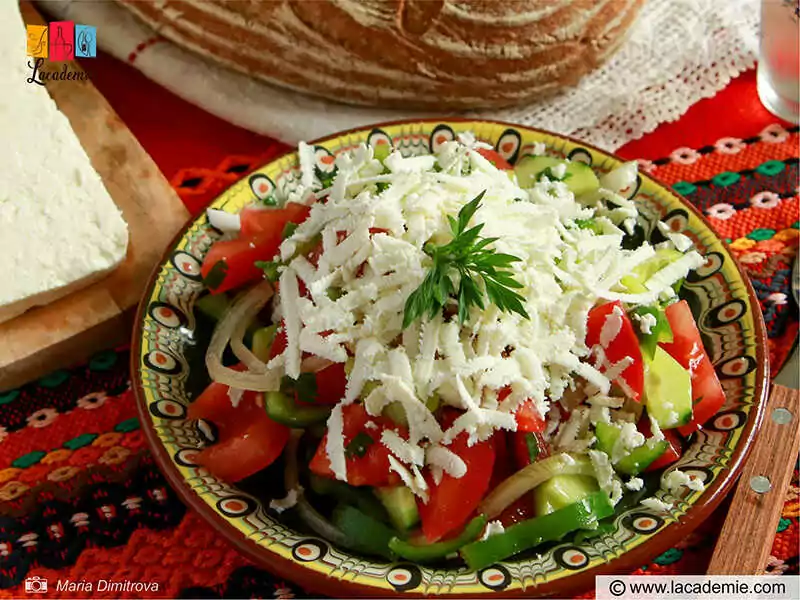
Due to the same similarity, many locals assumed that ‘Shopska Salata’ stemmed from the Shopi ethnographic group and had been served centuries ago. Others believed that this salad was an invention of Balkantourst – a local tour operator company – during the 1950s.
Whatever the origin is, the main ingredients of shopska salata are diced tomatoes, cucumbers, onions, peppers, and sirene cheese on top, with some parsley for garnishing.
In 2014, shopska salata became the most recognizable dish of Bulgarian cuisine. Once you have this salad, you may notice that the outcome dish has 3 colors that perfectly imitate the flag of Bulgaria.
Check out why you should try the famous Bulgarian Shopska salad.
19. Kiselo Mlyako (Кисело мляко) – Bulgarian Yogurt
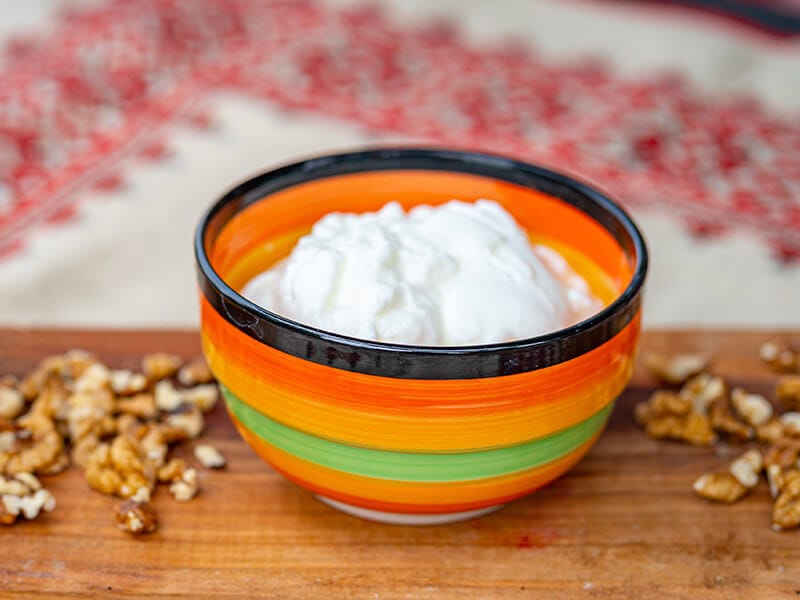
I’ve mentioned the “traditional Bulgarian yogurt” more than once, and this is it – kiselo mlyako. The fame of the yogurt is believed to have been built about 4000 years ago. And what identifies it from the rest is the two main starter bacteria.
Though it’s now famous as one of the healthiest and tastiest yogurts in the world, the folks in Bulgaria actually called it a sort of sour milk. But that doesn’t matter much; this is one of the foods that made them proud for being Bulgarian.
Thanks to the mild flavor, they can use their kiselo mlyako in almost every meal, from breakfast to dinner. However, perhaps the most use of it is as a dessert, served with fruits and honey for some extra sweetness.
20. Lukanka (Луканка) – Dry Cured Salami
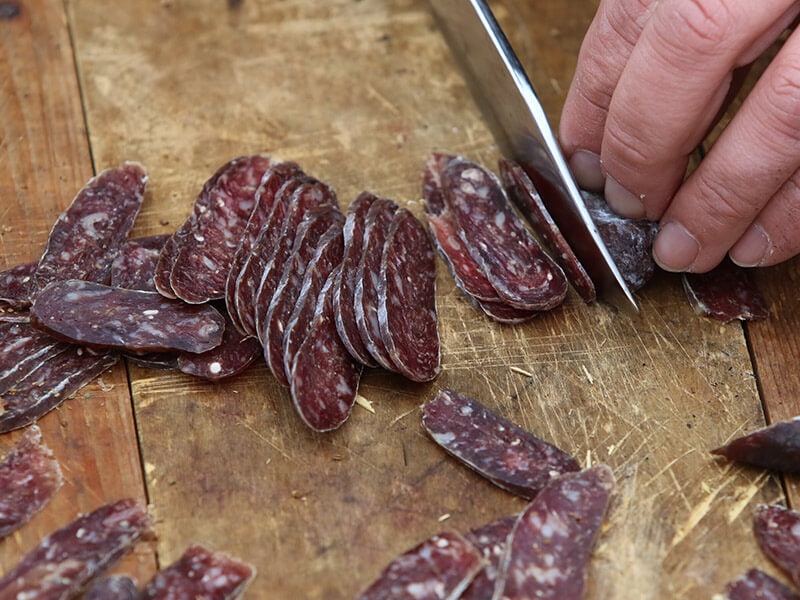
Interestingly, the ‘luk’ prefix means onion in the Bulgarian language, but onions have been excluded from the traditional recipes for a long time. Nowadays, the typical ingredients of this salami are cumin, black or white pepper, salt, pork, and beef.
Visually, it’s a semi-dried salami in brownish-red, which has a grainy look due to the mixture’s fat. Nowadays, lukanka is mostly used as an appetizer or starter, though many would love to have it as a daily snack.
21. Lutenitsa (Лютеница) – Bulgarian Vegetable Spread
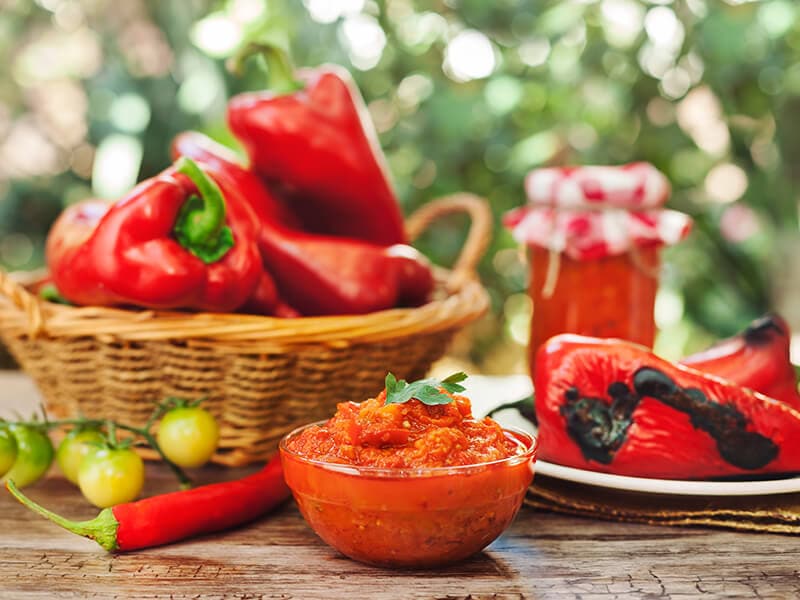
One of the foods shared among the Balkan nations, ‘lutenitsa’ or ‘ljutenica’, is somewhat between spread and chutney with the typical red color. What made its thick consistency were peppers, tomatoes, eggplants, garlic, and onion.
Nowadays, lutenitsa appears in many varieties and is exported to many other countries. Besides Bulgaria, you may also come across this dish on the gastronomic menu of Serbia and Macedonia.
The Bulgarians have two ways to enjoy this relish: spread it on toast or crackers or use it as a dipping sauce for their traditional dishes.
22. Turshia (Туршия) – Pickled Vegetables
Also known as Tsarska Turshia or the “King’s” Turshia, Bulgarians believed that this pickled dish used to be served for the Kings and remains the old recipes after centuries. That means it’s so flavorful that it can stand for a snack on its own, not just a side dish.
The traditional Bulgarian recipe includes carrots, unripe tomatoes, cabbage, cauliflower, and, most importantly, bell peppers.
23. Printsessa (Принцеса) – Ground Meat Sandwiches
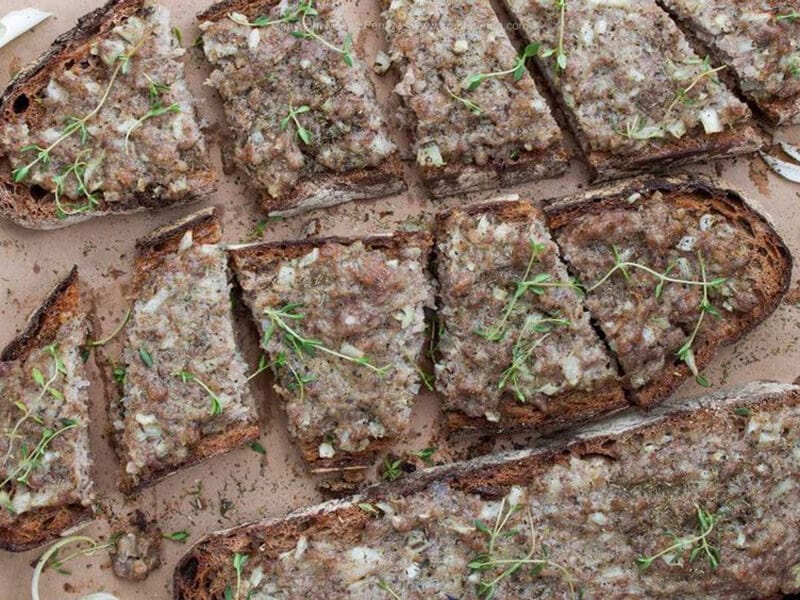
This last is among the pride dishes of the Bulgarians. And though Printsessa may be an excellent choice for breakfast sandwiches, many usually have it as a snack or fast food dish. The name ‘printsessa’ is actually “princess” in English, but its origin is still debated today.
Since Printsessa is an open meat sandwich that is topped with Kashkaval – a typical yellow cheese of Bulgaria, many have believed that it’s the cheese that inspired the name. Some others put their faith in the origin of medieval Bulgarian rulers.
Start Your Culinary Wanderlust In Bulgaria Now
There’s no exaggeration saying that either your stomach or your budget will be pleased to dive into Bulgarian cuisine. In general, the food of this Balkan nation is very light and comfortable, so that you can eat from dish to dish all your trip long.
Does the article include your tastes? Have you written down some favorite dishes on your bucket list? Or have you ever tried one of those? Leave the answers down in the comment section! I assume you have some exciting thoughts to share.
Also, don’t forget to share this article with your beloved people that are interested in Bulgarian foods. I’m positive that they’ll be delighted as you do. Then, there’s no hesitation to start your wanderlust in Bulgaria.
